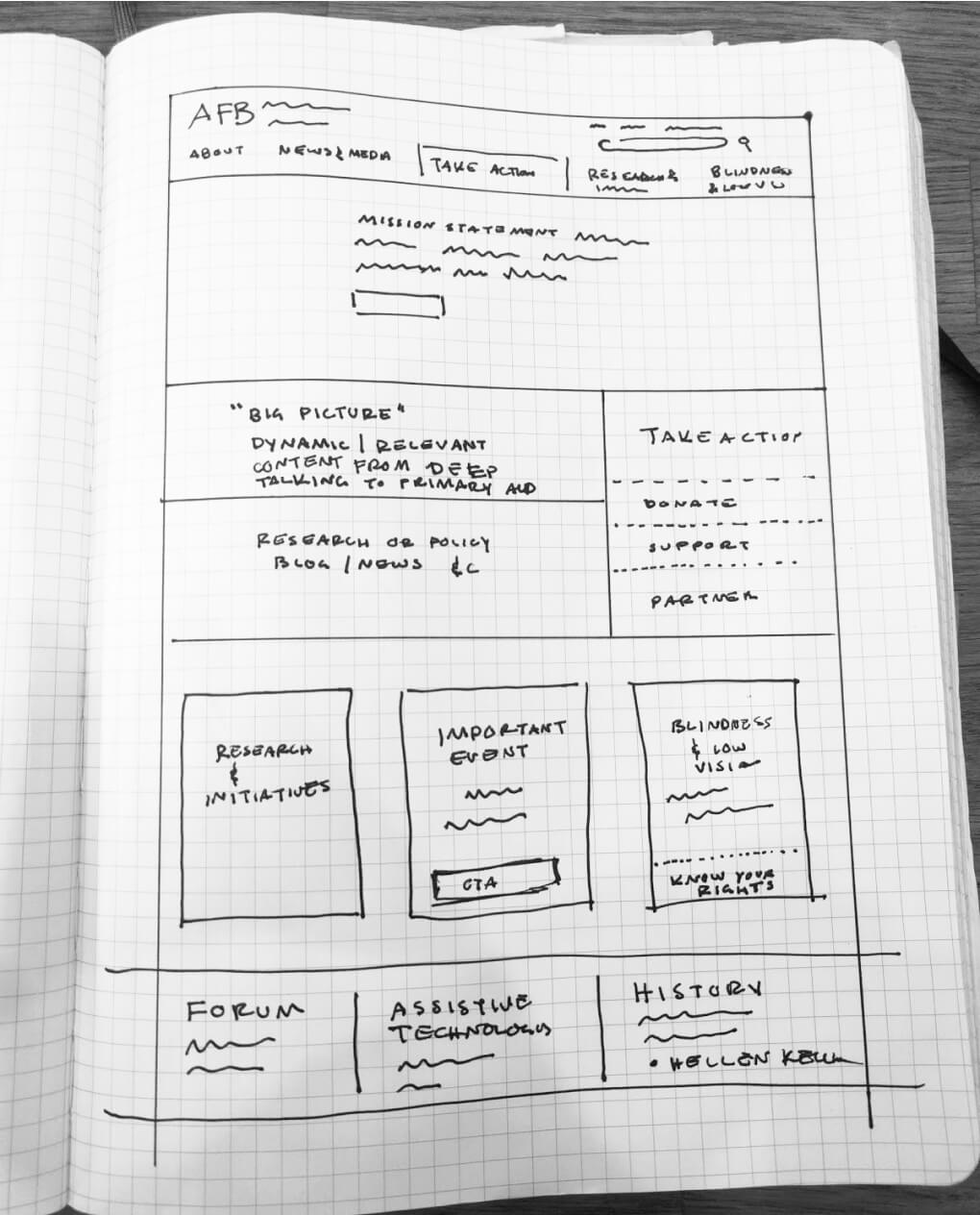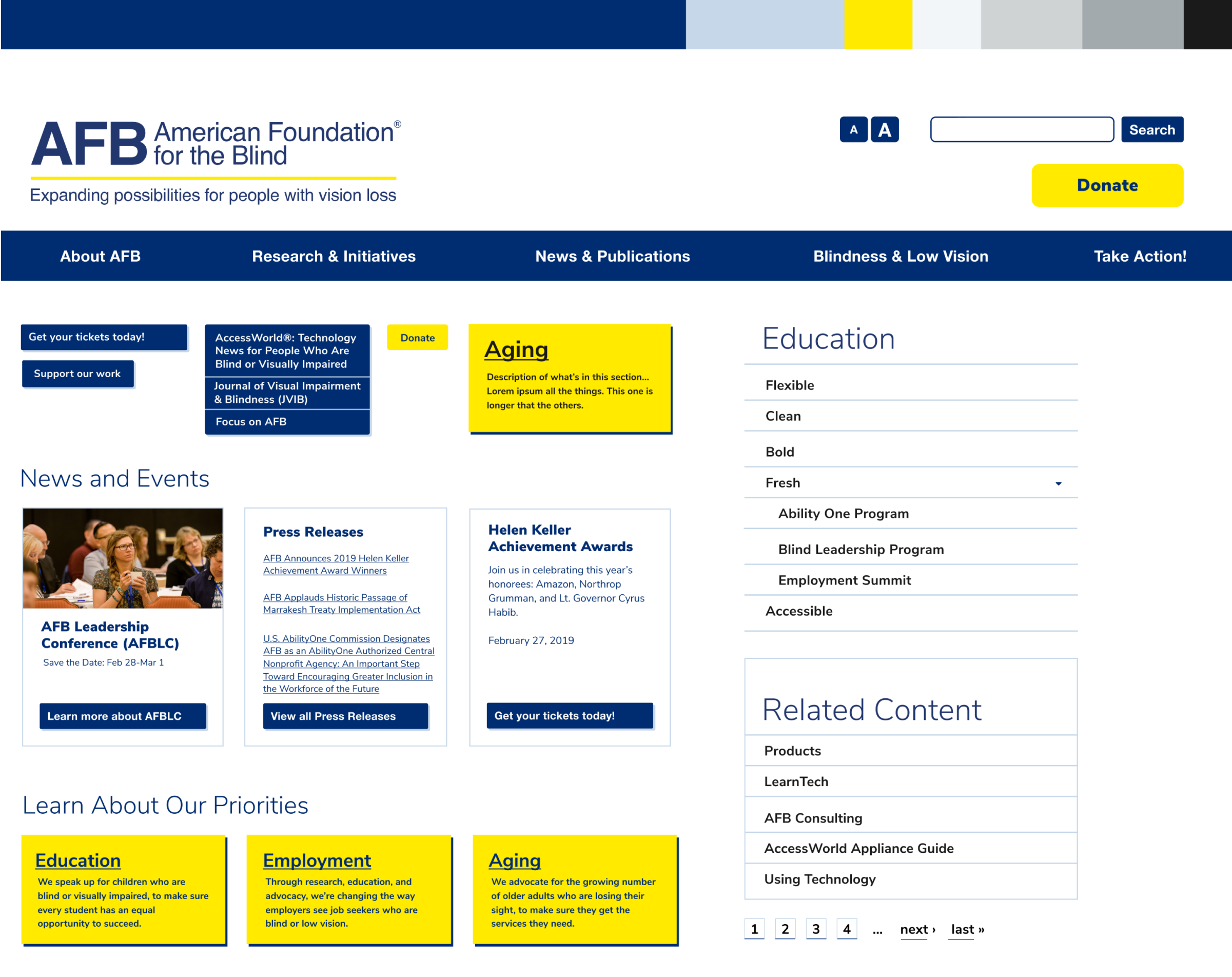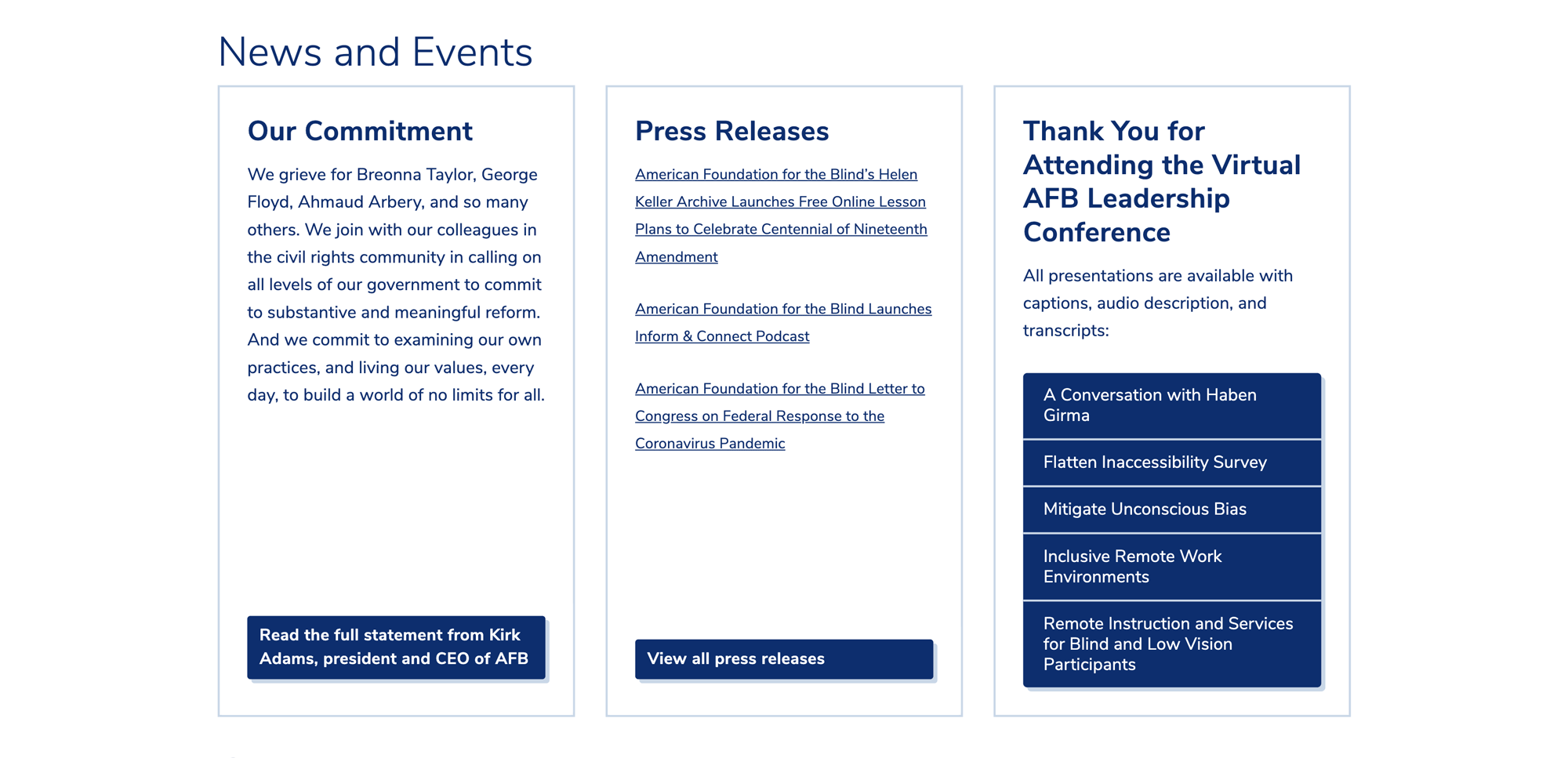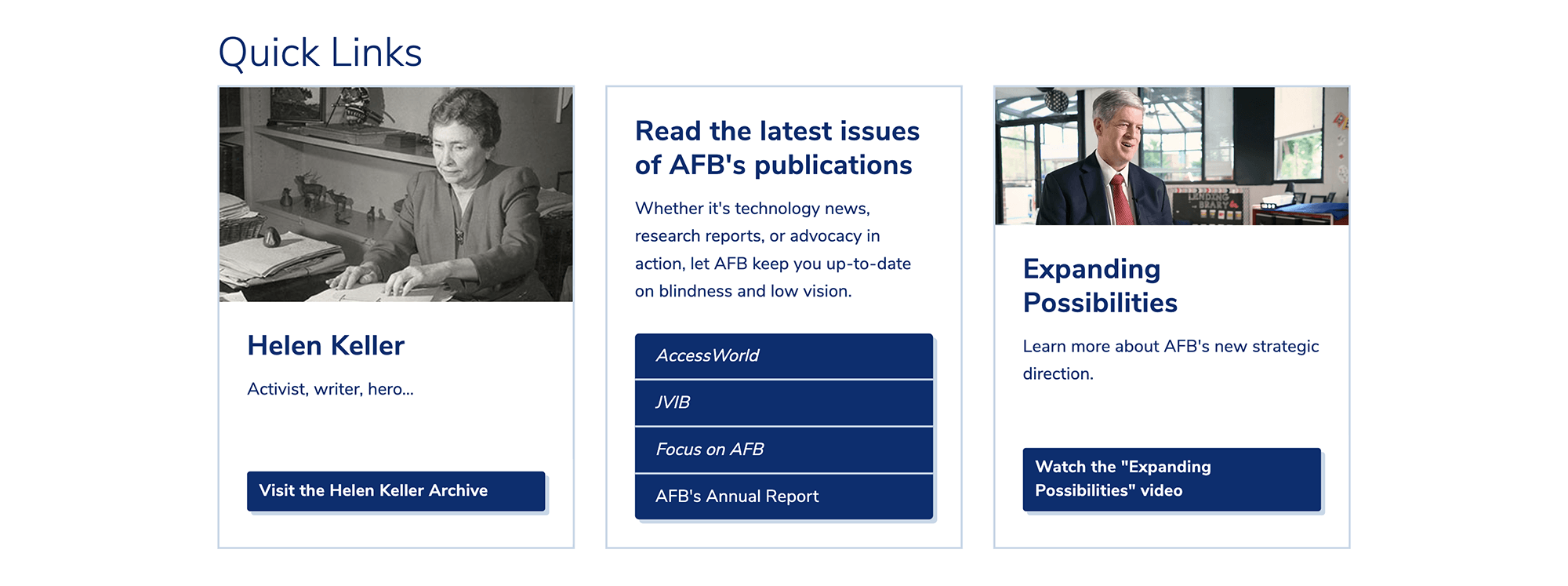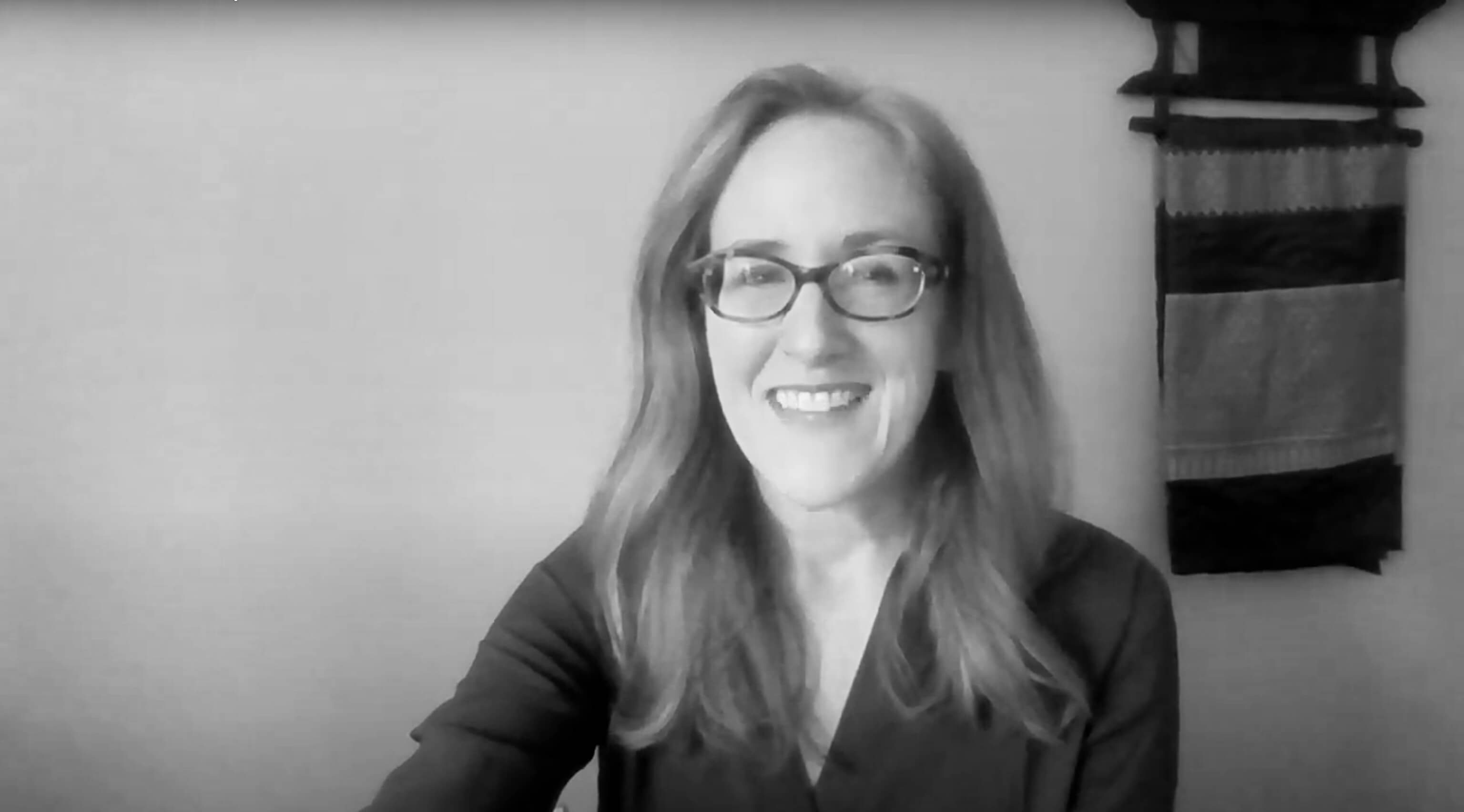Since 1921, the American Foundation for the Blind (AFB) has been a force for people with vision loss. Whether you know them by name or not, you've encountered their impact in braille, audiobooks, and the ADA. This is where Hellen Keller dedicated her career.
After nearly 100 years of helping people with vision loss within the system, AFB broadened their mandate to change the system itself. They needed a partner to redesign their web presence to both launch a revolution and continue serving their established audience. Of course, accessibility was essential, both in delivering a usable design for all vision levels and that developers with vision loss could build.
Liz Neal dedicated nearly two decades of her career to AFB, rising to become their Director of Communications. Both sweet and direct, she knew when to leverage strategic partnerships and brought both a clear vision and a collaborative openness to her role. When AFB’s new strategic plan expanded their audience to include policy makers and the wider community, Liz sought a partner to redesign their web presence to reach both a sighted and non-sighted audience. The design itself also needed to be accessible, as Liz’s team who would be migrating afb.org onto Drupal included developers with vision loss.
While AFB initially positioned this as a design challenge, our discovery immediately uncovered a significant parallel need for content strategy. Not only did AFB aim to appeal to new audiences without any existing research to guide the tone and voice, they also possessed a wealth of current content that would need to fit in their new site. Even though they aimed to broaden their reach, they knew educators still needed access to their Helen Keller archives and people still needed access to resources about living with vision loss.
"Our challenge was how to convey concepts like systems change in a way that made sense to regular people and inspired them to take action, and of course, we wanted to continue to showcase best practices for fully accessible inclusive website design."


